Can I Charge a 5V Battery with a 12V Charger
When dealing with electronics, one of the most important aspects to understand is how charging voltages work. Many people wonder, is it safe to charge a 5V battery with a 12V charger? In this article, we’ll dive deep into the potential risks and solutions associated with charging a 5V battery with a charger designed for higher voltage systems. By understanding the mechanics of voltage, charging circuits, and battery chemistry, you’ll be able to avoid damaging your battery and ensure a longer lifespan for your devices.
For anyone who’s ever faced the dilemma of needing to charge a device but not having the right charger, this article will guide you through why using a charger with a voltage higher than what your battery is rated for can be dangerous, and how to safely handle such situations.
- What Happens When You Charge a 5V Battery with a 12V Charger?
- How Does a 5V Battery Differ from a 12V Battery?
- Can I Use a 12V Charger with a Step-Down Converter for a 5V Battery?
- Can Charging a 5V Battery with a 12V Charger Cause Damage?
- Best Practices for Charging a 5V Battery Safely
What Happens When You Charge a 5V Battery with a 12V Charger?
Charging a 5V battery with a 12V charger is not only dangerous but also can lead to severe consequences. First, it’s important to understand the relationship between voltage, current, and charging efficiency. A 5V battery is designed to be charged at 5V, and using a 12V charger would force a higher voltage into the battery, exceeding its safe operating range.
Understanding Battery Charging Voltage and Current
Batteries are designed to accept a specific range of voltages for charging. This voltage range is crucial for the battery’s longevity and safety. Charging a 5V battery with a 12V charger means that the battery will attempt to accept the higher voltage, which could damage the internal chemistry, leading to overheating, swelling, or even an explosion in extreme cases.
The Danger of Overvoltage
When you attempt to charge a 5V battery with a 12V charger, the battery’s internal protection circuits (if present) may attempt to regulate the voltage, but the high voltage input can still lead to a thermal runaway event, causing the battery to overheat. This can not only shorten the battery's life but also present significant safety hazards, especially if the battery is sealed or not well-ventilated.
>>See also 4Ah Vs 6Ah Battery, Is A Higher Ah Battery Better
How Does a 5V Battery Differ from a 12V Battery?
Understanding how a 5V battery differs from a 12V battery is crucial in explaining why charging them with different voltage chargers doesn’t work. Let’s compare the two types and their specifications.
Voltage Differences and Series/Parallel Arrangements
A 5V battery typically consists of lithium-ion or lithium-polymer cells arranged in parallel. The nominal voltage of each cell is around 3.7V, but charging voltage can reach up to 4.2V. To reach 5V, the cells are arranged in parallel, so the overall system is still designed to safely charge at a lower voltage. A 12V battery, on the other hand, typically consists of 3 or more lithium-ion cells in series, with each cell being 3.7V. This configuration allows for higher energy storage but requires charging at a higher voltage level.
Parallel vs. Series Configuration
- 5V battery: Parallel arrangement (3.7V nominal per cell)
- 12V battery: Series arrangement (3.7V nominal per cell, with three or more cells in series)
Therefore, charging a 5V battery with a 12V charger would mean the voltage is not only too high for the individual cells, but it would also be improperly distributed across the battery pack. This can result in serious damage to the cells, as they are not designed to handle the higher input voltage.
Can I Use a 12V Charger with a Step-Down Converter for a 5V Battery?
One of the most common solutions when faced with incompatible charger voltages is the use of a step-down converter. These devices, also called buck converters, are designed to reduce a higher input voltage to a lower output voltage that’s suitable for the device being charged. For instance, you could use a 12V charger with a step-down converter to safely charge a 5V battery.
How Step-Down Converters Work
A step-down converter works by taking the 12V input and reducing it to a 5V output, allowing the 5V battery to charge safely. These converters regulate the voltage, ensuring that the battery receives only the required amount of voltage for charging. It’s essential, however, to choose the correct step-down converter designed for your battery’s charging requirements, as poorly configured converters can still result in overvoltage or overheating.
Benefits of Using a Step-Down Converter
- Safety: By regulating the voltage, a step-down converter ensures that the 5V battery receives the correct voltage.
- Cost-Effective: Using a step-down converter is often more affordable than purchasing a dedicated charger.
- Versatility: A step-down converter allows you to use a universal 12V charger with multiple devices, including 5V batteries.
What to Look for in a Step-Down Converter
When selecting a step-down converter, ensure that it is capable of handling the required current for your 5V battery. The converter should be rated for the power demands of your device, typically indicated in watts (W). A good converter will also have built-in protection features like overvoltage, short circuit, and thermal protection, ensuring a safe charging experience.
Can Charging a 5V Battery with a 12V Charger Cause Damage?
Yes, charging a 5V battery with a 12V charger can cause irreversible damage, especially if the charger is not regulated or if the battery does not have adequate protection circuits. Here are some of the potential risks:
1. Battery Overheating
When charging a 5V battery with an unregulated 12V charger, the battery may overheat due to excess voltage, causing the electrolyte inside the cells to break down. Overheating can lead to leaks, swelling, and even fire hazards.
2. Shortened Battery Lifespan
Overcharging a battery with too high a voltage can significantly reduce its lifespan. The internal chemistry of the battery is affected, leading to a decrease in the number of charge cycles it can handle before its capacity begins to degrade.
3. Safety Hazards
In extreme cases, overvoltage can lead to a thermal runaway reaction, which can cause a battery to catch fire or explode. Although this is rare with modern batteries that have built-in protections, the risk is higher when the charger is not properly regulated.
Best Practices for Charging a 5V Battery Safely
To ensure safe charging of a 5V battery, it is crucial to follow best practices and use appropriate chargers or adapters.
1. Use a Charger Designed for 5V Batteries
The safest method for charging a 5V battery is using a charger that is specifically designed for the battery’s voltage. A 5V USB charger is ideal for most small lithium-ion and lithium-polymer batteries.
2. Use a Regulated Charger
If you absolutely need to use a 12V charger, always pair it with a regulated power supply or step-down converter that can safely reduce the voltage to 5V.
3. Monitor the Charging Process
Whenever charging batteries, particularly in situations where you are using different voltage sources, always monitor the charging process. Make sure the battery does not overheat and stop charging if it feels warm to the touch.
>>See also How Long Power Tool Batteries Last And Factors That Affect Their Lifespan
Conclusion: Is It Safe to Charge a 5V Battery with a 12V Charger?
Charging a 5V battery with a 12V charger is not recommended due to the significant difference in voltage requirements. Directly charging a 5V battery with 12V can lead to damage, overheating, and potential safety hazards. However, by using a step-down converter or regulated charger, you can safely charge a 5V battery even with a 12V input source.
The key takeaway is always to ensure that your charger matches the specifications of the battery. By doing so, you protect your devices, extend battery life, and avoid costly or dangerous mistakes. If you're ever unsure about the compatibility between chargers and batteries, consult the battery’s manufacturer recommendations or seek professional advice.
While charging a 5V battery with a 12V charger is possible with the right tools, it’s generally best to use the correct charger for the job. Stay safe and always prioritize compatibility.

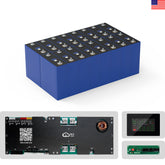



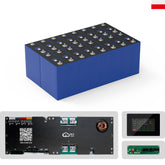



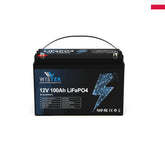
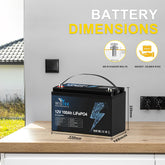
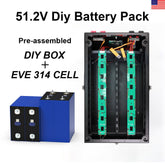

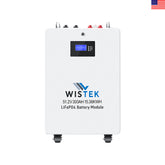
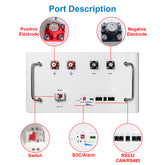
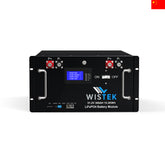
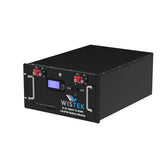


Leave a comment
All blog comments are checked prior to publishing